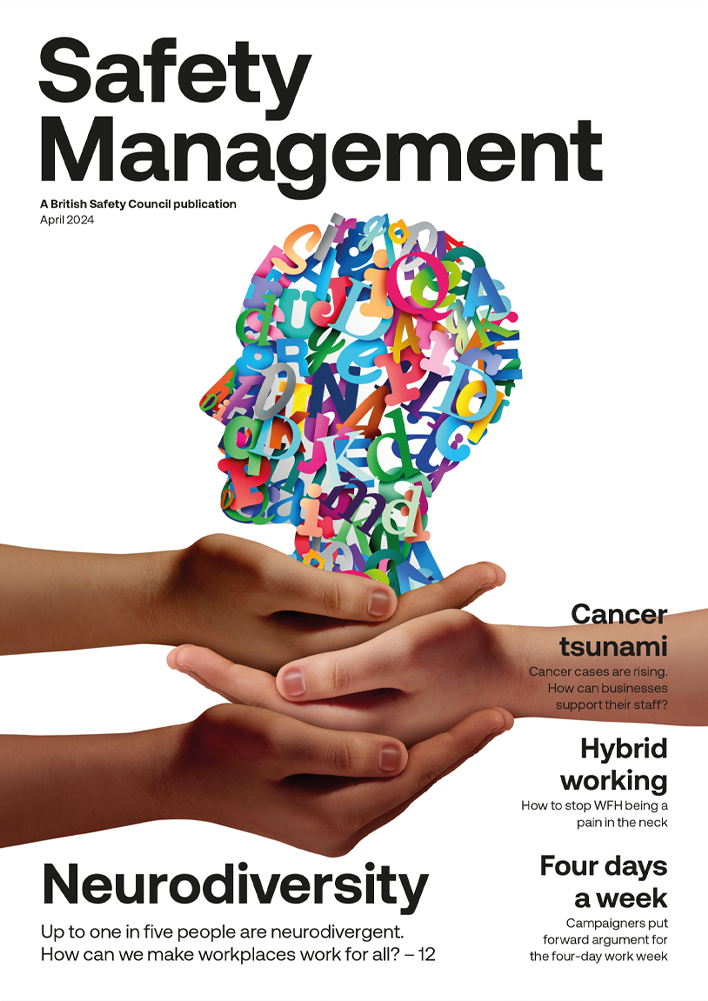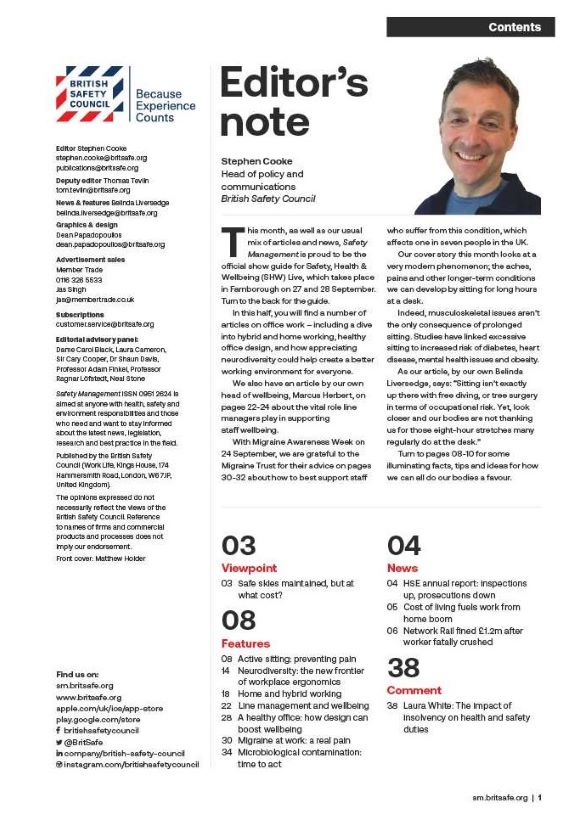Swapping hi-vis jackets for black tie and ballgowns, over 500 health and safety professionals arrived in style at Grosvenor House Hotel in London for a night of entertainment, dinner and dancing.
Features
Safety’s night of the year
Held on Friday 5 April, the International Safety Awards was the time for companies’ hidden heroes to become the night’s stars.
There were many winners, in all sorts of sectors and from around the world. Many, like the CEO of Malaysian Refining Company, Mr Hashim Majid, were looking forward to share their passion for safety with their peers, telling Safety Management that for him “health and safety comes from the heart”.
Others said that winning an award has been great for team morale. Adam Teskey, manufacturing director at The Vinyl Factory, the fame-steeped pressing plant in West London, said: “Without every member of the team pulling in the same direction, especially with matters as important as health and safety, you are always going to have weak spots in your organisation. Winning the award has been a reward to all the team members and proven that all of their collective hard work and dedication has been worth it.”

 Winning an ISA is a high point for many individuals and their organisations
Winning an ISA is a high point for many individuals and their organisationsCollecting awards on stage was also a high point for many. Oilfield services company Bumi Armada Operations collected four awards, including one merit for its floating sulphur processing plant, the Armada Sterling III FPSO. Ian Ramsey, manager of health safety security and environment, said: “After confirmation that four of our global installations were awarded with British Safety Council International Safety Awards, there has been jubilation across our global organisation.”
Jim Ellis, Bumi’s senior vice president added: “Winning an award is seen as an endorsement that all our safety management efforts over the years have finally been recognised by an independent safety body and this is very important, not only for providing KPIs when trying to market your company’s capability in managing risk, but also confirming to our employees that we take safety seriously.”
Mental health – no taboo
The speaker for the 61st British Safety Council International Safety Awards was mental health campaigner and writer, Alistair Campbell. “Britain is one of the safest countries to work in the world and that is good for business. We were involved in the London 2012 Olympics and the record around that whole project in safety is absolutely extraordinary,” he enthused.
With mental health a focus for the night, his talk centred on the issue and the role of employers. Recalling his own experiences with poor mental health, he described how it was a former boss at the Daily Mirror who helped him turn his life around when he was hospitalised during a breakdown. “It was like the biggest burden ever had been lifted,” he said. “It was someone who knew me saying, I am not going to define you by what just happened, because I know there’s something else in there.”

 Richard Carrington, Williams Southern Ltd collected the Individual Champion award from Mates in Mind
Richard Carrington, Williams Southern Ltd collected the Individual Champion award from Mates in MindThere is still a huge taboo around talking about mental health. Campbell is aware of this most after he speaks at events like the Gala Dinner when he’s approached by people he calls ‘whisperers’. “They come up for selfies or book signings and they say [in a whisper], ‘thanks for talking about mental illness’. And the reason they whisper is that they are surrounded by the taboo.”
He said everyone in the audience would have, if not personal experience, then brothers, sisters, friends or partners who have been affected by mental illness. “It’s universal, but we don’t talk about it as though it’s universal, we don’t debate it as though it is.” Employers can do a lot to change things by treating people with mental health as valuable employees who just happen to have different needs to some others.
“Employers, businesses, people like yourselves, you are actually just as important as government because a lot of this is about the attitude of bosses to workers.” He wished the audience ‘all the best’ in their efforts to champion good work in this area, concluding by saying “you guys will do more to move the dial on this than government, or the media”.
Crusading campaigns
As a British Safety Council event, it was appropriate to celebrate its own achievements of the past year.
Air pollution is a big issue, yet lack of ownership of the health hazard makes this a tough area to campaign on. Yet campaign we did, for recognition of the right of outdoor workers – a group vulnerable to air pollution because they work in it all day – to breathe clean air. At a demonstration in Oxford Circus outdoor workers bore placards and British Safety Council staff chanted slogans to raise awareness of the issue.

 Hashim Majid CEO of Malaysian Refinery Company (centre) collecting an award for best in sector
Hashim Majid CEO of Malaysian Refinery Company (centre) collecting an award for best in sector“Despite clear evidence [of the risks to health] the government, and indeed politicians in general, appear not to take seriously the risk of ambient air pollution to the health of outdoor workers,” said Mike Robinson, CEO of the British Safety Council. “That’s why we’re demanding action, and to support our campaign we’ve developed an App in partnership with King’s College London. The App allows outdoor workers to gauge their levels of exposure to air pollution, and suggests tips on how to reduce it.” He invited organisations to join the campaign and use the app, Canairy.
Mike also singled out for recognition, Mates in Mind, the British Safety Council’s mental health charity, which gave out several of its own awards on the night. “Last year, with nearly 200 supporting organisations we were able to reach through to support over 187,000 construction workers,” he said.
After awards and speeches, guests enjoyed a well-earned three course dinner and wine. This ensured there was plenty of energy for getting down to the famous All Stars band.
For the complete list of winners visit the International Safety Award website here
FEATURES

Why line managers play a vital role in workplace wellbeing
By Marcus Herbert, British Safety Council on 03 September 2023
The behaviours of line managers can have a positive or negative impact on employee health, wellbeing and engagement, so it’s vital managers get staff feedback on whether their management style is supportive or negative, and have regular check-ins so workers can raise concerns about their wellbeing.

Watercooler Event to hone in on eight trends in employee health and wellbeing
By Claire Farrow, Make a Difference Events & Media on 15 April 2024
The free-to-attend Water Cooler Event at ExCeL London on 23–24 April will see more than 6,000 workplace experts coming together to explore the latest thinking, solutions and best practice for supporting and boosting employee wellbeing, diversity and workplace culture.

Sedentary working and how to combat the ‘sitting disease’
By Gavin Bradley, Active Working on 05 April 2024
Prolonged and excessive sitting poses a major risk to our health, but the Get Britain Standing campaign and On Your Feet Britain Day on 25 April are a great way of encouraging workers to sit less and move more.



